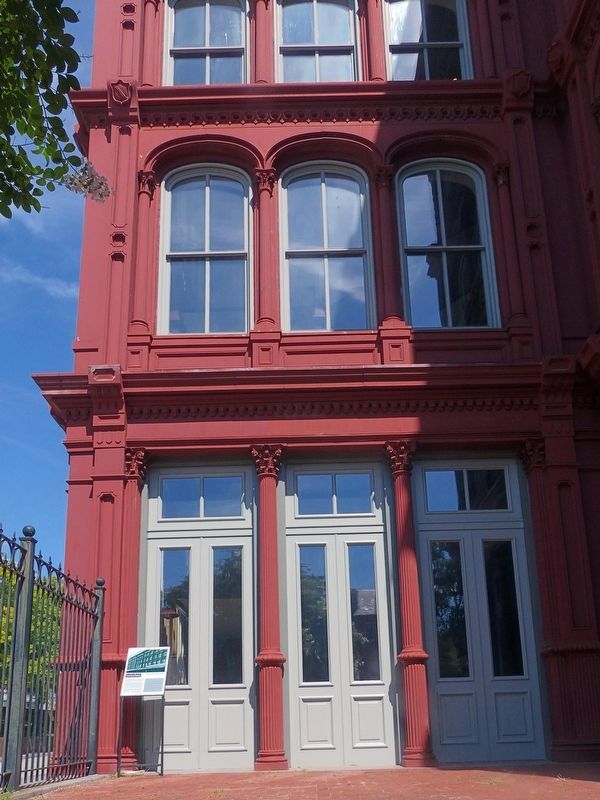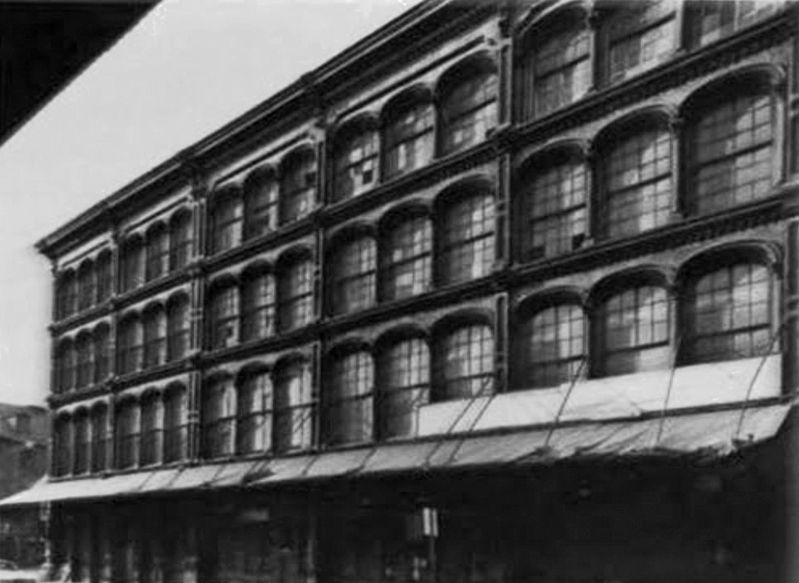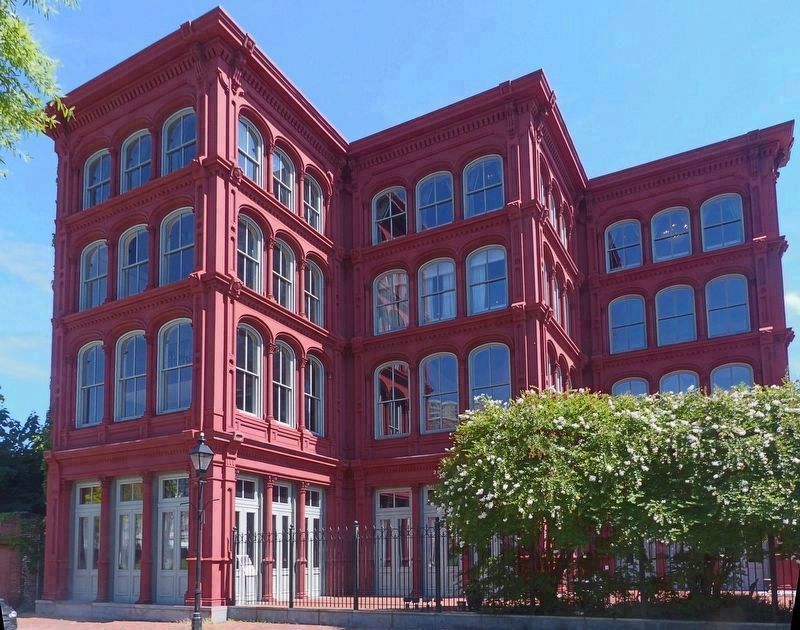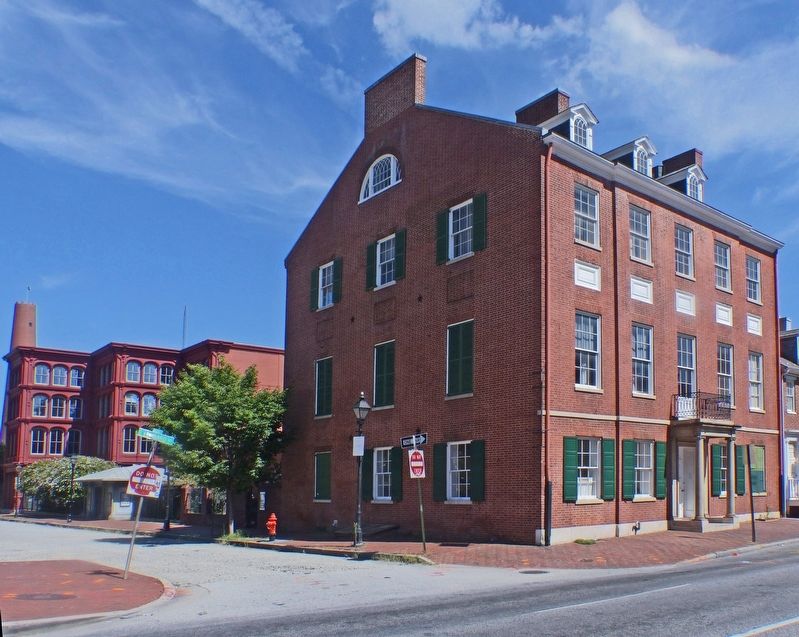Jonestown in Baltimore, Maryland — The American Northeast (Mid-Atlantic)
Cast-Iron Façade
The front of the Morton K. Blaustein City Life Exhibition Center is a unique example of recycling. The five cast-iron bays fronted a building at 218-226 S. Charles Street before it was demolished in 1976 to make way for Baltimore's Convention Center. Responding to pleas from local preservationists, the City government dismantled the cast iron for future restoration.
Cast iron was an Important and popular nineteenth-century architectural material. Cast-iron façades with windows allowed plentiful light into manufacturing and retail spaces, were relatively inexpensive to purchase and quick to install, and they offered great variety of architectural elements. The original 105-foot facade was erected in two stages between 1869 and 1876 for William H. Thomas, a local packer of oysters and fruits. For much of the twentieth century, the structure was associated with two family-run wholesale produce businesses: Nelson and James W. Stevens, owners of 224-226 S. Charles Street, and Giovanni Fava and Sons of 218-222 S. Charles Street. Many Baltimoreans still refer to the Iron front as the “Fava Building.”
Baltimore was a major producer and exporter of cast Iron and at one time had more than 100 Ironfront buildings. Most were lost in the 1904 fire, which destroyed Baltimore's downtown, and some were demolished during various urban renewal projects. Today, only a handful of full fronts survive. Some of the original cast iron was lost during disassembling and storage. To replace the loss, new, cast-aluminum pieces were manufactured.
Acknowledgments:
We give special thanks to CSX Railroad and Union Pacific Railroad for their generosity and assistance in returning the historic cast-iron Façade to Baltimore.
Bairds/Historical Casting restored the original cast-iron elements and cast the missing elements. The new configuration of the façade is the work of architects Peterson and Brickbauer.
Interpretive signs were made possible with funds from the Maryland Humanities Council, through a grant from the National Endowment for the Humanities.
Topics. This historical marker is listed in this topic list: Architecture.
Location. 39° 17.343′ N, 76° 36.29′ W. Marker is in Baltimore, Maryland. It is in Jonestown. Marker can be reached from South Front Street. Touch for map. Marker is at or near this postal address: 29 South Front Street, Baltimore MD 21202, United States of America. Touch for directions.
Other nearby markers. At least 8 other markers are within walking distance of this marker. Cistern (within shouting distance of this marker); Carroll Mansion (within shouting distance of this marker); Small Brick Building (within shouting distance of this marker); Home of Edward Johnson (about 300 feet away, measured in a direct line); Brewer’s Park (about 300 feet away); The Star Spangled Banner Flag was Born Here (about 400 feet away); 9 North Front Street (about 500 feet away); Fish Market (about 500 feet away). Touch for a list and map of all markers in Baltimore.
Credits. This page was last revised on October 9, 2021. It was originally submitted on August 31, 2016, by Allen C. Browne of Silver Spring, Maryland. This page has been viewed 557 times since then and 44 times this year. Photos: 1, 2, 3, 4, 5. submitted on August 31, 2016, by Allen C. Browne of Silver Spring, Maryland. • Bill Pfingsten was the editor who published this page.




